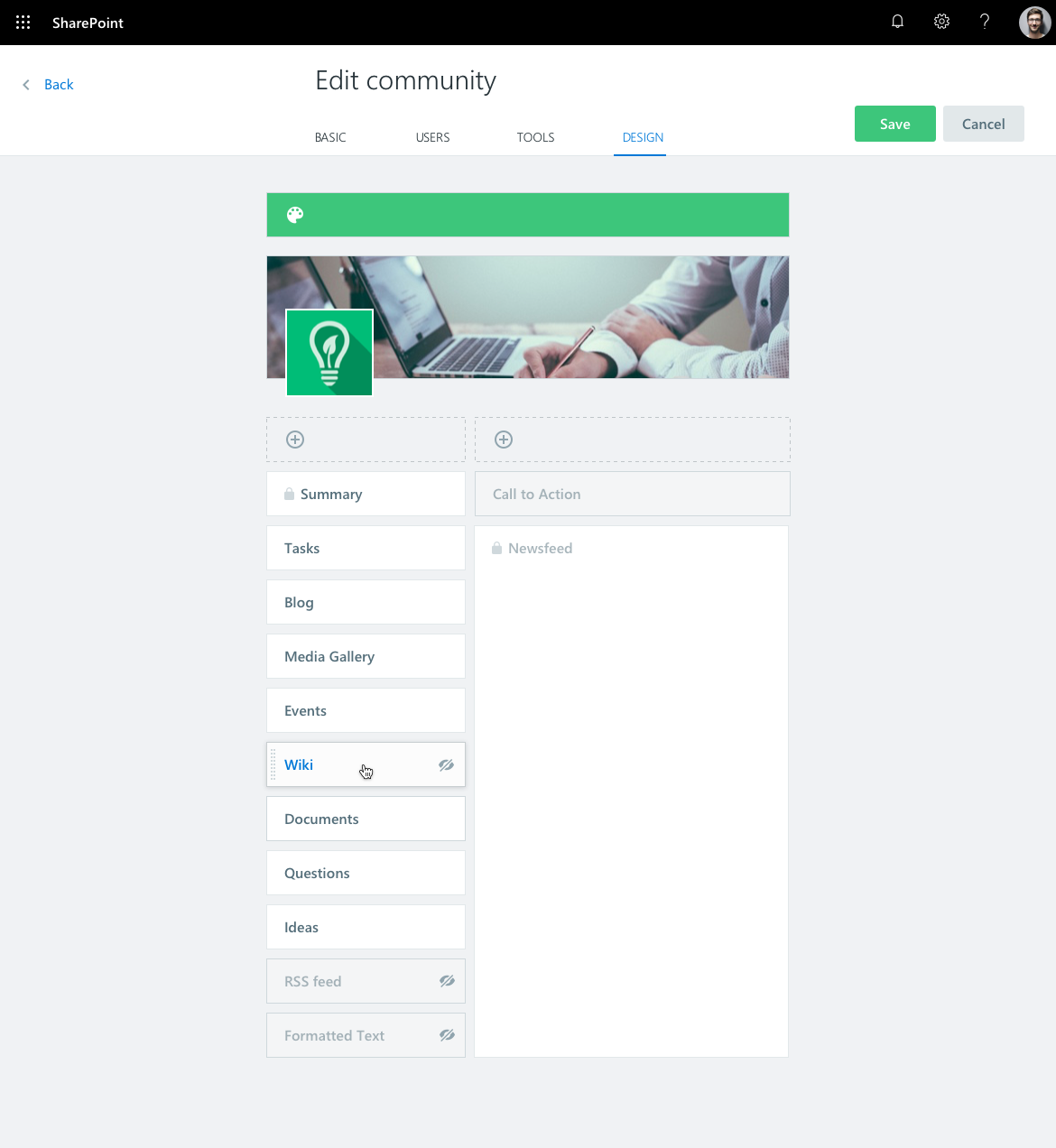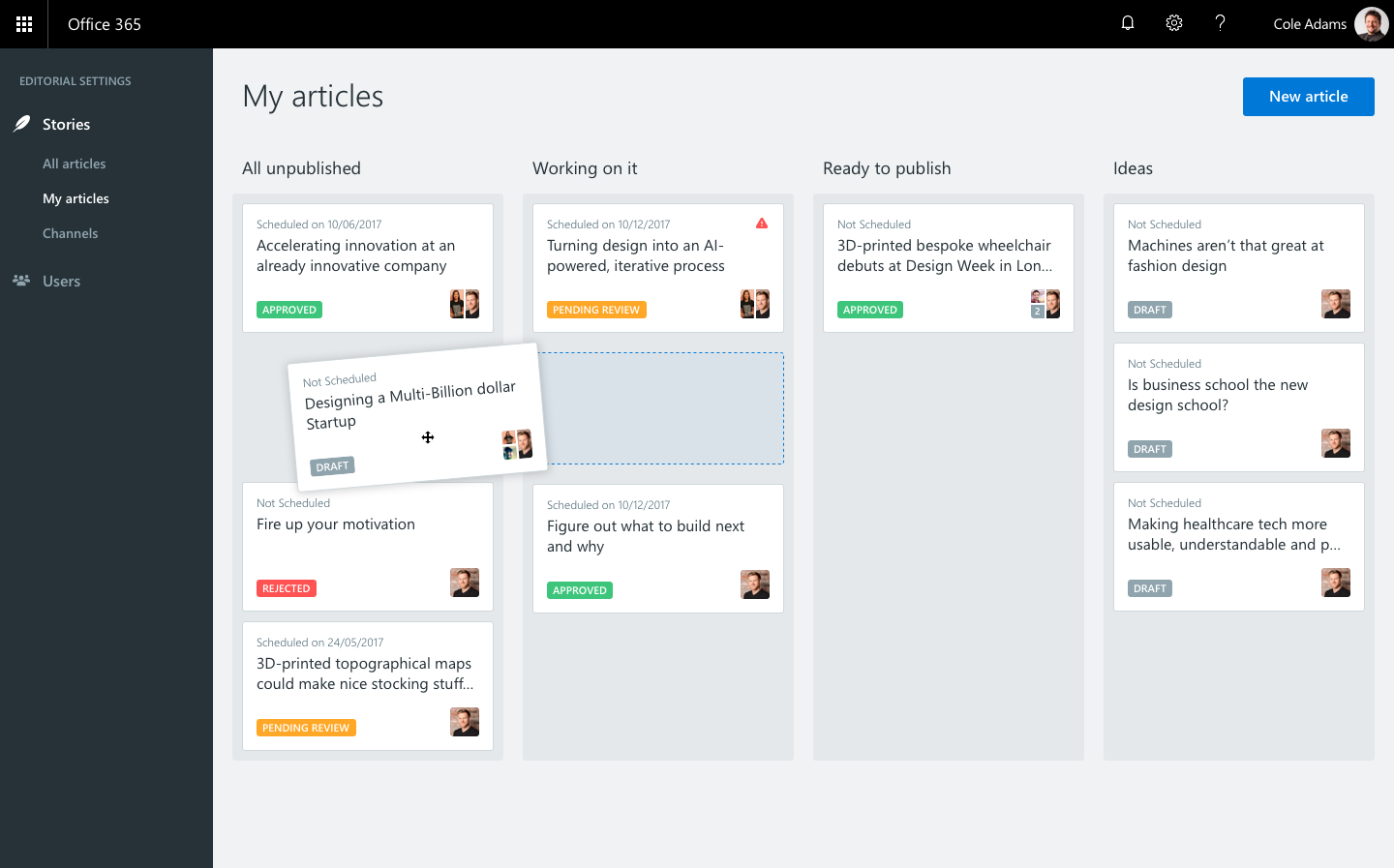



When talking with customers we often get asked: “Is Beezy a CMS?” In fact, we get asked it a lot. The short answer is: “Yes. Beezy can be used very effectively as a Content Management System for the Digital Workplace.” But there’s more to it than that. In this blog, we thought we would give you the long answer. We will explain how the concept of the CMS has changed over the years and how Beezy reflects all of these changes, including headless CMS options.
Content Management Systems (CMS) emerged in the late nineties to fulfill a very specific need. A CMS allowed users to create, manage, and update websites with dynamic content. Until then, most websites had only static content (i.e. a company page with an intro and some basic contact information). As websites evolved, it quickly became common to use dynamic blocks of content (i.e. the latest company news, recommended products, etc.).
These new “dynamic” websites required tools and systems to update and manage all of this content. A CMS is, therefore, a tool that allows content creators to manage dynamic pieces of information within a website or online service.
What Beezy offers: Users can create, publish, and manage dynamic content blocks such as news, calendar events or blogs – all within our user interface.

The problem with this strict definition of CMS is that it implies that there is a content creator on one end and a content consumer on the other end. As we will see in the next section, this is rarely the case with the modern Digital Workplace – where multiple users are engaging with content.
The rise of web 2.0 and consumer social networks in the mid-2000s disrupted the idea of traditional CMS. The advent of user-generated-content completely blurred the frontiers between creators and consumers of information:
Beezy has always embraced this idea of social collaboration and therefore many aspects of Beezy reflect the step in the evolution of Content Management Systems to adopt user-generated content.
What Beezy offers: Content such as Updates, Ideas, Wikis, Blogs or Questions, and Answers are not centrally managed in Beezy and cannot fold under the typical CMS bucket.
Of course, you can apply strict governance and policies to safeguard social collaboration and user-generated content in Beezy, but there is a high level of self-regulation that comes with this inherent transparency and social control. Beezy also allows content curators to highlight or to editorialize user-generated-content in an efficient way.

Undoubtedly, many aspects of SharePoint allow editors to manage dynamic pieces of enterprise content such as news, pages, and lists. SharePoint as a platform has clearly evolved over the last ten years from a traditional ECM (Enterprise Content Management - focused on document management) to a CMS.
What Beezy offers: By being native to SharePoint, Beezy inherits most of the CMS capabilities that come with the platform. But it extends these to offer a more flexible, unified and superior User Experience to content managers.

When you combine the capabilities that Beezy offers with those that SharePoint provides you get the flexibility and extensibility to manage corporate content at scale.
Software concepts are always evolving. The CMS concept itself seems a bit outdated nowadays, and we are witnessing some recent changes – for example, the rise of “headless CMS”. This new trend reflects the fact that content today needs to be broadcasted to various services and channels (social networks, news aggregators, etc). There is a growing need to decouple the content creation from its final consumption format and channel.
Wikipedia defines the concept of a headless content management system as: “a back-end only content management system (CMS) built from the ground up as a content repository that makes content accessible via a RESTful API for display on any device”.
What Beezy offers: Our RESTful API can perfectly be used as a headless CMS. Actually, some customers are already piloting this idea. For instance, it is being used to deliver Beezy content to employees in new channels such as chatbot windows or in Digital Signage.
As always, Beezy is at the forefront of innovation in the digital workplace and will keep evolving its CMS features.
If you want to learn more about using Beezy as a CMS in your Digital Workplace, including headless CMS options, you can read more here and get started by requesting a demo.
These Stories on internal communications

No Comments Yet
Let us know what you think